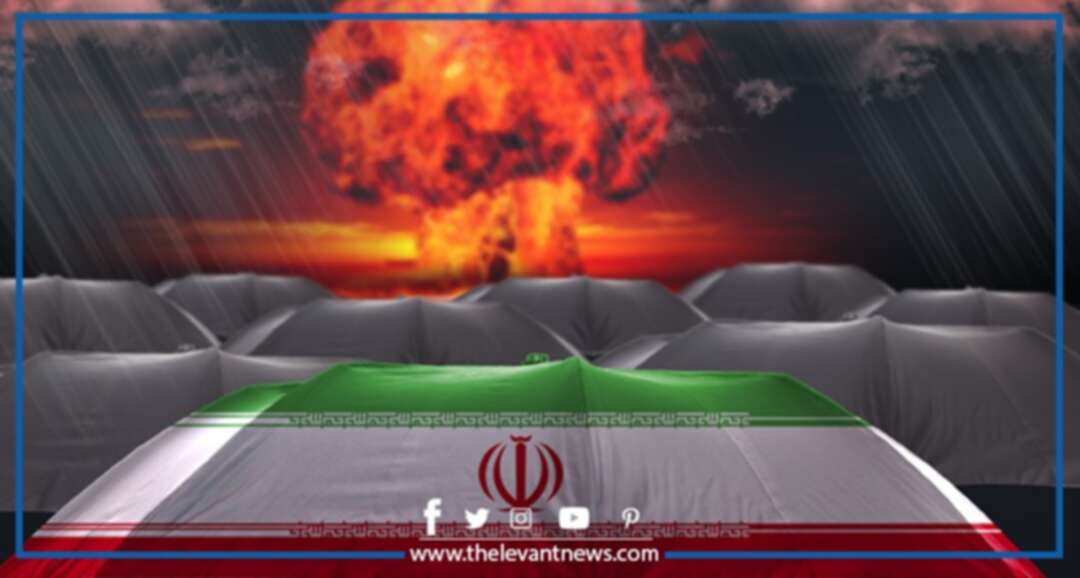-
Protests in SE Iran are just the tip of the iceberg

The five days of protests by locals in Sistan-Baluchestan, Iran’s most impoverished province, shows how volatile Iran is.
The protests began when Iran’s Revolutionary Guards Corps created obstacles and dug large ditches on the roads to prevent the flow of fuel
to neighboring Pakistan by Baluch fuel traders. The guards shot and killed dozens of innocent, defenseless people on February 22. Facing
dire poverty, violent repression, and constant violations of their dignity, the fuel traders rebelled against the Revolutionary Guards. The
people staged a strike action on February 25 and closed their shops.
They took their anger to the streets and government offices, occupying and destroying them fearlessly, despite the Revolutionary Guards and
security and law enforcement forces’ heavy presence.
The guards fired directly at the protestors and used tear gas to disperse them. The Iranian authorities, unable to contain the protests
despite firing and killing and bringing in armored vehicles, cut off the Internet and flew helicopters over Zahedan to intimidate the protestors.
Of course, the show of anger and dissatisfaction in Sistan-Baluchestan province is just the tip of the iceberg. The state’s looting,
corruption, ignorance and mismanagement have now reached such a level that, according to regime officials, 96 percent of the poor and hungry people are several times below the poverty line on the one hand; and 4% of government officials and offices and those affiliated with Khamenei and the Revolutionary Guards, are in the possession of key monetary sources and investments in Iran.
On February 25, Mohebati, the governor of Sistan-Baluchestan, also warned that if protests turned into a revolution “all the officials
would do down together”.
After so many years of corruption, repression and mismanagement by the regime and their inability to govern, the Iranian society has reached the point of explosion. In other words, the necessary factors for massive, widespread and regime-changing protests are well in place. Even a minor and insignificant friction between the people and the government will cause a spark that can spread to other cities. The Sistan and Baluchestan protests and the November 2019 protests are testimony to this.
According to remarks made by many of the regime’s officials and analysts, the next uprising in Iran is not even comparable to those in
November 2019 or December 2018.
Mostaghel state-run daily wrote on February 23 that Iranians would use “weapons and explosives” to counter the regime in future protests. What made the Sistan and Baluchestan protests in Saravan significant was the rapid spread of protests and attacks against security forces by
angry locals.
Protesters stormed a Governor’s Office and IRGC bases and torched police vehicles.
Despite Iran’s attempt to block the Internet, the news of the unrest was spread widely and was accompanied by widespread popular support
throughout Iran.
Other neighboring cities, including Iranshahr, Zahedanand Khash staged their own strikes, closed their shops in support of Saravan.
Amateur video from the Saravan showed that protesters fought with security forces empty-handed and were not afraid of bullets shot back at them. The recent Sistan and Baluchestan protests send a clear message to Iran’s Supreme Leader Ali Khamenei. In the 1979 revolution against the Shah, the protests reached a point when every shot fired by the military and the Shah’s army, led to more anger and protests which eventually led to the overthrow of the Pahlavi dictatorship. This will happen again in Iran.
By Cyrus Yaqubi
You May Also Like
Popular Posts
Caricature
BENEFIT Sponsors BuildHer...
- April 23, 2025
BENEFIT, the Kingdom’s innovator and leading company in Fintech and electronic financial transactions service, has sponsored the BuildHer CityHack 2025 Hackathon, a two-day event spearheaded by the College of Engineering and Technology at the Royal University for Women (RUW).
Aimed at secondary school students, the event brought together a distinguished group of academic professionals and technology experts to mentor and inspire young participants.
More than 100 high school students from across the Kingdom of Bahrain took part in the hackathon, which featured an intensive programme of training workshops and hands-on sessions. These activities were tailored to enhance participants’ critical thinking, collaborative problem-solving, and team-building capabilities, while also encouraging the development of practical and sustainable solutions to contemporary challenges using modern technological tools.
BENEFIT’s Chief Executive Mr. Abdulwahed AlJanahi, commented: “Our support for this educational hackathon reflects our long-term strategic vision to nurture the talents of emerging national youth and empower the next generation of accomplished female leaders in technology. By fostering creativity and innovation, we aim to contribute meaningfully to Bahrain’s comprehensive development goals and align with the aspirations outlined in the Kingdom’s Vision 2030—an ambition in which BENEFIT plays a central role.”
Professor Riyadh Yousif Hamzah, President of the Royal University for Women, commented: “This initiative reflects our commitment to advancing women in STEM fields. We're cultivating a generation of creative, solution-driven female leaders who will drive national development. Our partnership with BENEFIT exemplifies the powerful synergy between academia and private sector in supporting educational innovation.”
Hanan Abdulla Hasan, Senior Manager, PR & Communication at BENEFIT, said: “We are honoured to collaborate with RUW in supporting this remarkable technology-focused event. It highlights our commitment to social responsibility, and our ongoing efforts to enhance the digital and innovation capabilities of young Bahraini women and foster their ability to harness technological tools in the service of a smarter, more sustainable future.”
For his part, Dr. Humam ElAgha, Acting Dean of the College of Engineering and Technology at the University, said: “BuildHer CityHack 2025 embodies our hands-on approach to education. By tackling real-world problems through creative thinking and sustainable solutions, we're preparing women to thrive in the knowledge economy – a cornerstone of the University's vision.”
opinion
Report
ads
Newsletter
Subscribe to our mailing list to get the new updates!






















